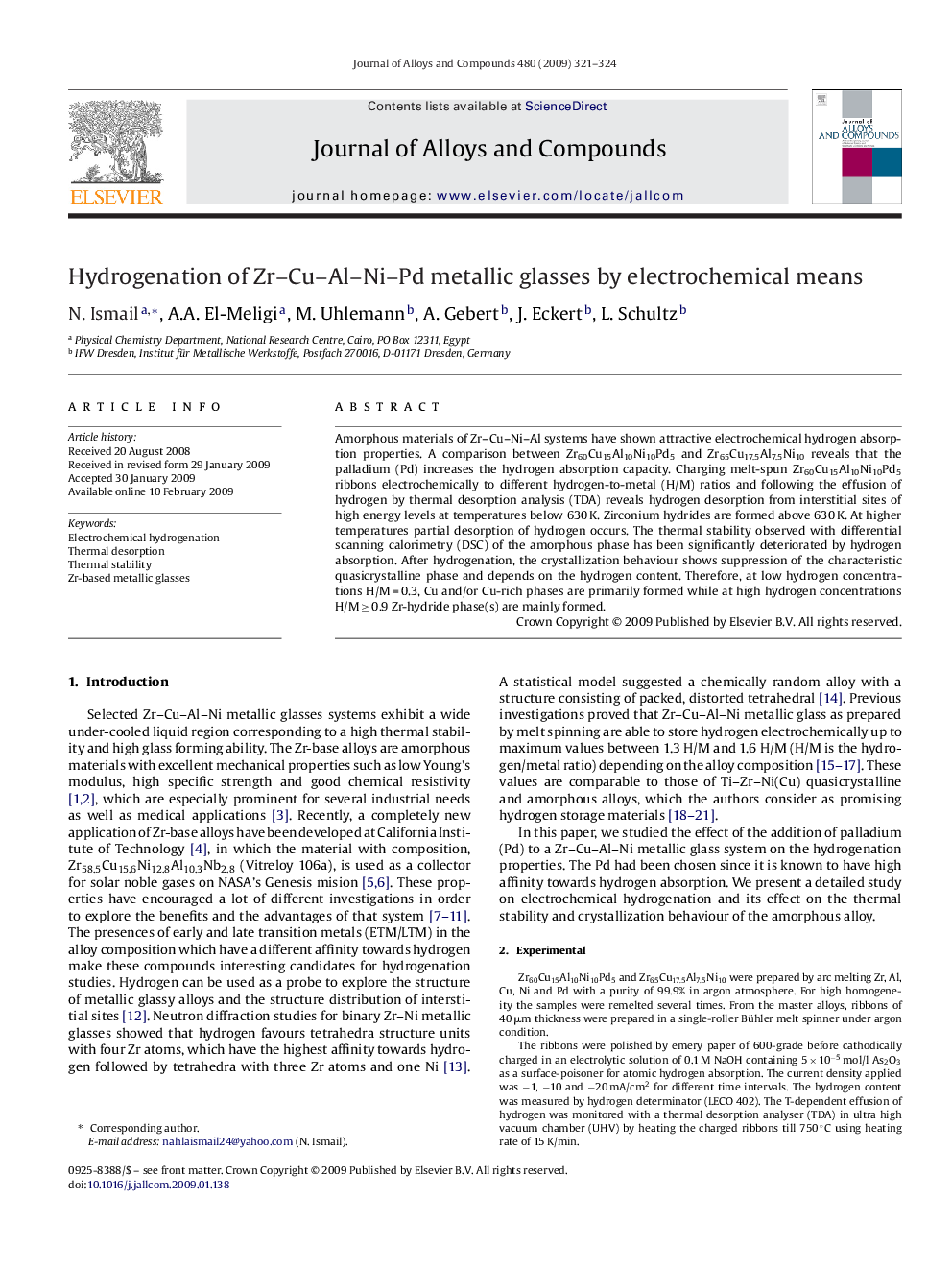| کد مقاله | کد نشریه | سال انتشار | مقاله انگلیسی | نسخه تمام متن |
|---|---|---|---|---|
| 1621045 | 1516397 | 2009 | 4 صفحه PDF | دانلود رایگان |

Amorphous materials of Zr–Cu–Ni–Al systems have shown attractive electrochemical hydrogen absorption properties. A comparison between Zr60Cu15Al10Ni10Pd5 and Zr65Cu17.5Al7.5Ni10 reveals that the palladium (Pd) increases the hydrogen absorption capacity. Charging melt-spun Zr60Cu15Al10Ni10Pd5 ribbons electrochemically to different hydrogen-to-metal (H/M) ratios and following the effusion of hydrogen by thermal desorption analysis (TDA) reveals hydrogen desorption from interstitial sites of high energy levels at temperatures below 630 K. Zirconium hydrides are formed above 630 K. At higher temperatures partial desorption of hydrogen occurs. The thermal stability observed with differential scanning calorimetry (DSC) of the amorphous phase has been significantly deteriorated by hydrogen absorption. After hydrogenation, the crystallization behaviour shows suppression of the characteristic quasicrystalline phase and depends on the hydrogen content. Therefore, at low hydrogen concentrations H/M = 0.3, Cu and/or Cu-rich phases are primarily formed while at high hydrogen concentrations H/M ≥ 0.9 Zr-hydride phase(s) are mainly formed.
Journal: Journal of Alloys and Compounds - Volume 480, Issue 2, 8 July 2009, Pages 321–324